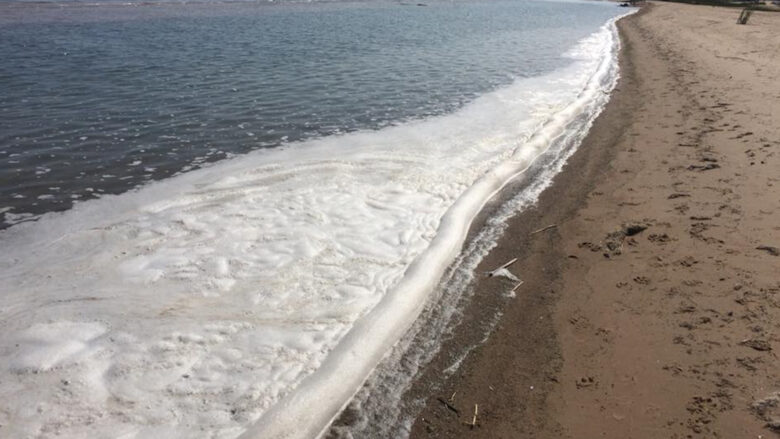 Catch the latest updates on what’s happening with PFAS in the Great Lakes region. Check back for more PFAS news roundups every other week on our website.
Catch the latest updates on what’s happening with PFAS in the Great Lakes region. Check back for more PFAS news roundups every other week on our website.
On June 26, the non-profit group Waterkeeper Alliance announced the results of a study conducted across 19 states, which revealed PFAS contamination in 98% of the waterways tested. This is part of a multi-phase monitoring initiative aimed at pressuring federal and state legislatures to stop the use of biosolids and prioritize funding and monitoring of PFAS — among other requests. This study specifically focused on waterways near wastewater treatment plants and sites that utilize biosolids as fertilizer. While “forever chemicals” were found both upstream and downstream from these sites, they discovered elevated levels at 95% of the downstream sites sampled from treatment plants. The highest amount of a single chemical was found in Michigan’s Rouge River, with 44 parts per trillion (ppt) of PFOA. Last April, under the Biden administration, the EPA set enforceable maximum contaminant levels at 4 ppt for PFOA. In Wisconsin, ten different versions of PFAS were discovered in Root River, with the highest being 18 ppt of PFPeA. On June 24, “the Wisconsin Supreme Court upheld the authority of state environmental regulators to address PFAS contamination under the state’s spills law without first designating them as hazardous substances,” according to Wisconsin Public Radio. In 2021, the Wisconsin Manufacturers & Commerce sued the Wisconsin Department of Natural Resources (DNR) on behalf of the dry cleaning company, Leather-Rich. Michigan Attorney General Dana Nessel finalized a settlement agreement with Domtar, a paper, pulp, and wood company, to remediate PFAS-contaminated materials at their composting site near Port Huron. The paper mill started using PFAS to make specialty paper in the 1980s. A new study from Pennsylvania State University suggests that millions of people in the state may be drinking water polluted with “forever chemicals.” After sampling 167 private wells, they found 65% had detectable levels of chemicals, and 18% exceeded the EPA’s maximum contaminant level. Recent reporting by Bridge MI investigated how septic systems could be contaminating wells with PFAS. More PFAS news in case you missed it:
- “Trump admin signals it will back Superfund PFAS cleanups,” according to E&E News.
- According to the American Heart Association, a new study suggests prenatal exposure to “forever chemicals” may raise blood pressure during teenage years, especially in boys and Black children.
- Soybeans could be a potential substitute for toxic firefighter foam.
- “Without explanation, EPA restores some grants for PFAS research in Maine,” according to Maine Morning Star.
- From The Guardian, “Poison in the water: the town with the world’s worst case of forever chemicals contamination.”
Catch more news at Great Lakes Now:
Michigan triples ‘do not eat’ fish warnings as PFAS contamination concerns rise ‘Forever chemicals’ found nationwide in Canada, CBC map shows
Featured image: PFAS foam on a beach near the decommissioned Wurtsmith Air Force Base in Iosco County, Mich. (Great Lakes Now Episode 1025)

